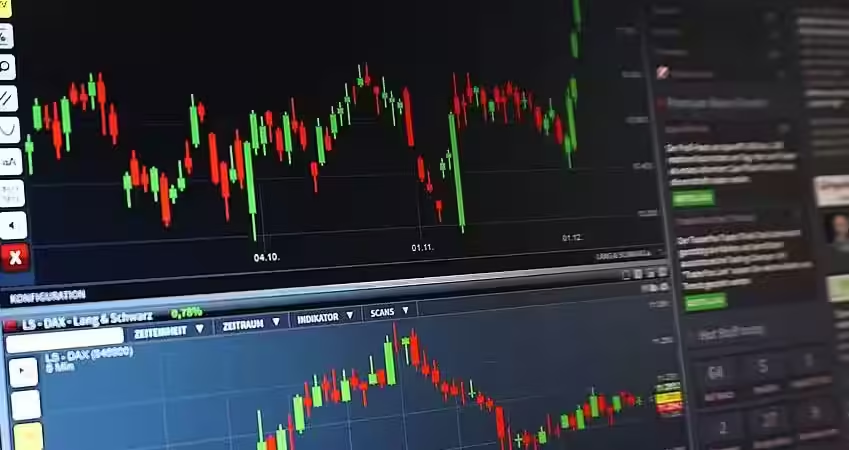Indian Stock Market: Key Developments Shaping Market Trends Today
The Indian equity benchmarks, Sensex and Nifty 50, are anticipated to start on a weaker note on Monday, influenced by downturns in global markets.
Asian markets showed declines, while the U.S. stock market recorded its worst performance of the year on Friday.
This week, investors will closely track several key factors, including India’s GDP data, the expiry of February’s derivative contracts, tariff-related announcements by Donald Trump, fluctuations in the rupee against the U.S. dollar, foreign investment inflows, as well as both domestic and global macroeconomic indicators.
On Friday, the Indian stock market extended its losing streak for the fourth straight session, marking its second consecutive weekly loss.
The Sensex dropped 424.90 points (0.56%) to close at 75,311.06, while the Nifty 50 declined 117.25 points (0.51%) to settle at 22,795.90.
“A range of negative elements, including persistent foreign institutional investor (FII) outflows, a weakening rupee, high market valuations, and the risk of retaliatory tariff impositions by the U.S., continue to dampen investor sentiment toward Indian equities. Notably, domestic markets underperformed relative to both Asian and European indices, which saw notable gains,” said Prashanth Tapse, Senior VP (Research) at Mehta Equities Ltd.
Key Global Market Trends Impacting Sensex Today
Asian Markets
Asian markets were in the red on Monday, mirroring sharp declines from Friday, largely due to weak economic data.
Japanese markets remained closed for a public holiday. Meanwhile, South Korea’s Kospi fell 0.71%, while the Kosdaq dropped 1.21%. Hong Kong’s Hang Seng futures signaled a weaker opening.
Gift Nifty Outlook
Gift Nifty hovered around 22,682, trading at a discount of nearly 140 points compared to the Nifty futures’ last close, suggesting a sluggish opening for Indian equity indices.
Wall Street Performance
U.S. markets closed lower on Friday due to disappointing economic reports, fresh tariff concerns, and signs of weakening consumer demand.
- Dow Jones Industrial Average declined 748.63 points (-1.69%) to 43,428.02.
- S&P 500 slipped 104.39 points (-1.71%) to 6,013.13.
- Nasdaq Composite fell 438.36 points (-2.20%) to 19,524.01.
Among major stocks, Tesla and Rivian dropped 4.7%, Nvidia tumbled 4.08%, Amazon slid 2.83%, UnitedHealth fell 7.2%, while Block and Akamai Technologies plunged 17.7% and 21.7%, respectively.
U.S. Business Conditions
The U.S. business activity index slumped to its lowest point in 17 months. According to S&P Global’s flash U.S. Composite PMI Output Index, which measures both manufacturing and services, the reading dropped to 50.4 in February, down from 52.7 in January. This marks the weakest level since September 2023.
Consumer Sentiment in the U.S.
Consumer confidence in the U.S. declined more than expected in February, reaching a 15-month low, while inflation expectations surged.
The University of Michigan’s Consumer Sentiment Index dropped to 64.7, down from 71.7 in January, marking its lowest level since November 2023. Households projected inflation over the next year to rise to 4.3%, the highest since November 2023, up from last month’s 3.3%.
Gold Prices Today
Gold prices remained steady near record highs. Spot gold traded at $2,934.82 per ounce, while U.S. gold futures edged down 0.1% to $2,950.10. On Thursday, gold reached a historic peak of $2,954.69 per ounce.
Crude Oil Market Trends
Oil prices moved lower, with Brent crude slipping 0.27% to $74.23 per barrel, while U.S. West Texas Intermediate (WTI) crude futures declined 0.38% to $70.13 per barrel.
Currency Market – U.S. Dollar Weakens
The U.S. dollar continued its downtrend on Monday, while the euro strengthened. The euro rose 0.46% to $1.0508, while the British pound hovered near a two-month high at $1.2659. The Japanese yen also strengthened, reaching a two-month high at 148.85 per dollar.







